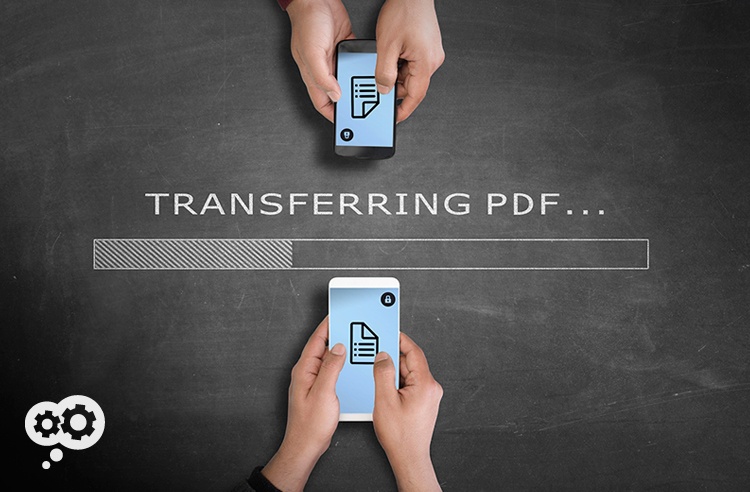
For sharing and storing electronic files in a law office, PDF is often your best file format choice.
In the legal industry, in order for a document to be admissible in court it must be in a format that cannot be altered without leaving an electronic trail.
Though there are quite a few file format options (TIFF, JPEG, or GIF) that are unalterable without also creating an electronic trail. Print documents can be scanned and saved to these formats. Born digital documents can be saved to these file formats. But there is one option that is the most economical and practical – PDF.
Simply put, PDF meets the needs for legal admissibility in court as an electronic format that is read only and will leave an electronic trail if altered.
There are a few reasons why converting documents to a PDF format (especially in the legal field) is a good, and often the best, option.
Document-Level Security
When information is being shared over a network or over the Internet, document security is imperative. And with PDF format, your legal firm won’t have to fear an unauthorized user viewing documents sent in emails – you can implement password security at the document level so that no one can view the document without entering the password.
Analytics
If that password is breached, recipients are able to see who has access to the information – making necessary actions easy to take.
Compatibility
Since PDF was designed to create documents that can be shared and accepted across multiple computer platforms, the representation of the document is independent of the operating system, applications software, and hardware. What’s that mean in plain English? Whether you’re on a PC or a Mac, your PDF file will always appear the same way. So sharing important information quickly and securely is simple (which makes your day a little less hectic).
Less Paper
PDFs can convert to paper documents, and vice-versa. Because of this PDF files serve easily as electronic paper – meaning over time you can expect to see a lot more PDF files and a lot fewer paper files. And because online file cases can be sent via email in a PDF format, the inconvenience of faxing, mailing, shipping, or couriering is also eliminated.
Decrease File Size
You don’t have to lose the quality of a file when it’s converted to PDF. With PDF you can decrease the file size and/or merge files (like spreadsheets, presentations, etc.) into a single file all while keeping the same quality.
Interactive Documents
With Adobe Acrobat (and a host of other PDF software suites) you have the ability to interact with the document, by adding hyperlinks, rich media, audio, text, and many other optional features to your file. This allows colleagues to add notes or comments to a legal file as they’re being shared or studied more simply and conveniently.
Searchable PDF
Skimming a file or, worse, files trying to find the specific section you’re looking for sucks time out of your day. With a quick search, you can easily find what you are looking for in a PDF – you can even link sections to their appropriate pages in the file by organizing the document with a table of contents.
Mobile
With a technology charged world, an office isn’t always your “office” and having information available no matter where you are is growing more important (and necessary). Adobe Reader allows you and anyone else, on any device, anywhere, anytime the ability to access and view the files they need.
PDF as a Record
PDF is an international standard and no longer tied to Adobe, the creator of the format. The following is a list of five reasons law firms will find PDF/A a worthwhile file format to investigate using. These five reasons are from a PDF Association post, The Legal Case for PDF/A (click here to read it).
- Archiving e-mails as PDF/A: Today, more and more correspondence, some of it of a contractual nature, is being sent by e-mail. Archiving emails to PDF/A is easy to implement using the various PDF/A server-based tools available, including any attachments to the email (which can also be automatically converted to PDF/A).
- Plans, maps, and design drawings: Digital maps, architectural drawings, and construction plans all form part of case archives and are usually compressed very efficiently to small PDF/A files that retain all of the formatting of these documents.
- Signed digital contracts: An increasing amount of business correspondence is sent electronically. PDF/A documents can be digitally signed to enable legally effective contracts to be concluded using only digital means.
- Correct colours in image documents: PDF/A also enables the accurate display of colours, an important advantage when working with digital image data in e.g. insurance claims and medical records.
- Accessible PDF files: In the USA, accessibility in the digital world has been an issue for a long time – especially for the Internet. Enabling the accessibility of information to visually impaired members of society is now also on the agenda in Europe. Since PDF/A specifically supports structured content in PDF documents, it is ideal for processing accessible PDF documents that can be read out by screen readers.
New to PDF and file formats and need some help? Here are four posts full of tips about the conversion process:
- Convert TIFF to PDF
Have questions? Let’s talk – we are happy to help.

